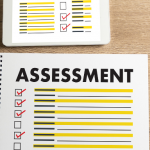Executive Summary
-
Climate risk assessment tools are crucial for integrating environmental sustainability into corporate ESG frameworks.
-
These tools help companies identify, measure, and mitigate climate-related risks, enhancing long-term resilience.
-
The article explores the benefits, challenges, and step-by-step process of implementing these tools.
-
Insights from industry experts and strategic recommendations are included for effective integration.
Introduction
In today’s rapidly evolving business landscape, the integration of Environmental, Social, and Governance (ESG) frameworks is not just a trend, but a necessity. Companies are increasingly facing pressure from investors, regulatory bodies, and consumers to transparently disclose their environmental impact and strategies for managing climate risks. But how can businesses effectively incorporate climate risk assessment tools into their ESG frameworks? This article delves into the significance of these tools and provides a comprehensive guide to their successful integration.
Definitions / Context
Climate risk assessment tools are analytical instruments or software designed to evaluate the potential impacts of climate change on business operations and financial performance. They provide crucial data that assists in understanding both physical risks, such as extreme weather events, and transition risks, like policy changes related to carbon emissions.
Benefits / Pros
-
Enhanced Decision-Making: By providing data-driven insights, these tools enable companies to make informed decisions that align with long-term sustainability goals.
-
Risk Mitigation: Identifying vulnerabilities early allows companies to implement strategies that mitigate potential climate-related disruptions.
-
Investor Confidence: Transparent climate risk assessments can boost investor trust and attract ESG-focused investments.
-
Regulatory Compliance: Staying ahead of regulatory requirements regarding climate disclosures can prevent legal penalties and enhance corporate reputation.
Risks / Cons / Challenges
-
Data Complexity: The integration of complex climate models and data can be challenging for companies lacking technical expertise.
-
Cost Implications: Initial investments in advanced tools and training can be significant, potentially deterring smaller firms.
-
Uncertainty in Predictions: While tools provide valuable insights, inherent uncertainties in climate predictions can affect reliability.
Step-by-Step Process
-
Conduct a Baseline Assessment: Evaluate current ESG practices and identify areas where climate risk assessments can be integrated.
-
Select Appropriate Tools: Choose tools that align with specific industry needs and company size.
-
Data Collection and Analysis: Gather relevant data, including historical climate patterns and future projections.
-
Integrate Findings into ESG Strategy: Use insights to adapt existing ESG policies and practices.
-
Monitor and Review: Regularly update risk assessments to reflect new data and evolving climate scenarios.
A leading global manufacturing firm recently integrated climate risk assessment tools into their ESG framework. By doing so, they identified significant exposure to flood risks at several facilities. As a result, they relocated key operations and invested in flood defenses, significantly reducing potential losses and enhancing resilience against climate impacts.
Case Study: Global Manufacturer Enhances Climate Resilience
Expert Tips / Strategic Insights
-
Epiidosis Recommends: Regularly update your climate risk tools to incorporate the latest scientific findings and improve predictive accuracy.
-
Strategic Partnerships: Collaborate with environmental experts and technology providers to enhance tool effectiveness and staff training.
-
Stakeholder Engagement: Engage with stakeholders to ensure transparency and integrate their insights into your ESG strategy.
Tools / Resources / Calculators
-
Climate Risk Assessment Software: Consider tools like Climate Risk Analytics or Jupiter Intelligence for comprehensive analysis.
-
External Resources: Utilize platforms like the Task Force on Climate-related Financial Disclosures (TCFD) for guidelines and best practices.
Conclusion
Integrating climate risk assessment tools into corporate ESG frameworks is an essential step toward sustainable business practices. These tools not only aid in risk mitigation but also enhance corporate reputation and stakeholder trust. For businesses looking to future-proof their operations, adopting these tools is a strategic imperative.























